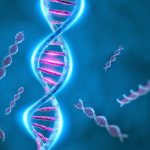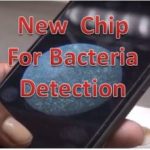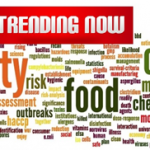fasdf@sadf.tu
Precedence-setting Food Safety Case: Foster Chicken Farm found Liable in Salmonella Case
Meatingplace reported that a jury in Arizona returned a precedent-setting verdict in favor of 5 ½ years old boy (Noah Craten) who had brain surgery in 2013, as a result of a massive brain abscess. The doctors determined that the abscess had been caused by bacterial meningitis due to Salmonella Heidelberg infection from what was believed to be chicken meat produced by Foster Poultry Farms. Although the USDA does not consider Salmonella an adulterant in raw chicken, and even though cooking the chicken will kill the bacteria, the case establishes that chicken producers can be held liable for Salmonella contamination. The...
fasdf@sadf.tu
A Single Genetic Code Change Makes African Salmonella More Deadly
A new study has identified a single genetic code change that allows Salmonella Typhimurium (ST313) to play a significant role in human bloodstream infections in sub-Saharan Africa. The study was published in Proceedings of the National Academy of Sciences, 2018 (PNAS) [Role of a single noncoding nucleotide in the evolution of an epidemic African clade of Salmonella Disa L. Hammarlöf, Carsten Kröger, Siân V. Owen, Rocío Canals, Lizeth Lacharme-Lora, Nicolas Wenner, Anna E. Schager, Timothy J. Wells, Ian R. Henderson, Paul Wigley, Karsten Hokamp, Nicholas A. Feasey, Melita A. Gordon and Jay C. D. Hinton; PNAS 2018] Invasive non-typhoidal Salmonellosis (iNTS) is killing approximately 390,000 people annually in sub-Saharan Africa. iNTS is caused by Salmonella that enters the...
fasdf@sadf.tu
UMass Amherst Developed a Low-Cost Chip to Detect Bacteria in Food and Water
Rapid methods for the detection of pathogens have been gaining acceptance in the food industry. Recent advances in technology can result in faster detection of pathogens, more convenient, more sensitive methods. We have seen many new alternative methods being proposed in the past couple of years. Below is an example of such a novel method. According to a press release from University of Massachusetts Amherst (https://www.umass.edu/newsoffice/article/umass-amherst-food-scientists-are ) a team of scientists (including Lily He, Lynne McLandsborough, and Brooke Pearson) developed a low cost, rapid method for the detection of bacteria in food samples. The assay steps include rinsing the fruit or vegetable, collecting...
fasdf@sadf.tu
The New Trending Page of askbioexpert.com is Active Now
The trending page is active now. I would like to emphasize the importance of this page in bringing up-to-date information about the trends of our profession. I encourage you to go to the trending page and read the topics that so far have been posted. If you have any relevant interesting topic, it is easy to post it on the page and help bring the information to the benefit of our members. This week’s covered topics include: Microbial Sensor Provides Non-Destructive Snapshot of Environments; It is Possible That Lactalis Sold Contaminated Baby Formula for ten years; Raws for Paws Recalled...




